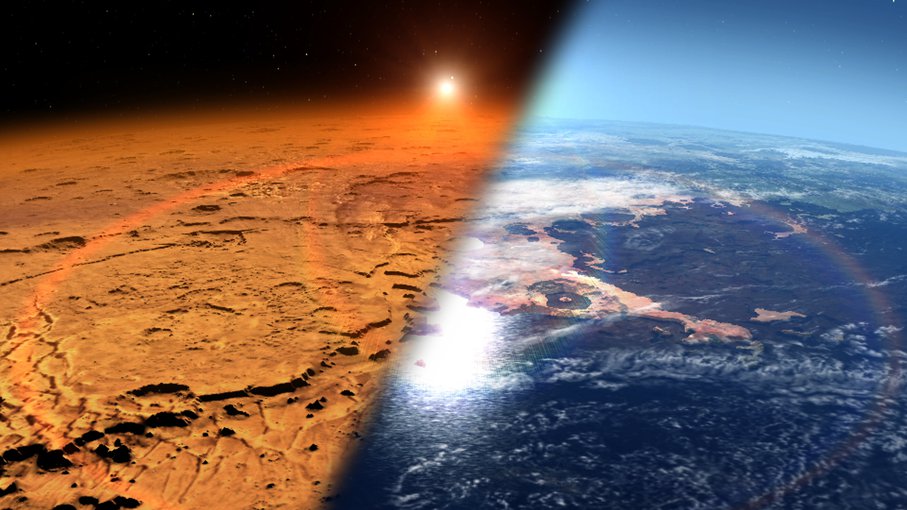
NASA-supported scientists have used a computer model to place new constraints on the composition of Mars’ ancient atmosphere. Mars is cold and dry today, but ancient Mars is thought to have been warmer and wetter. Understanding the composition of the ancient atmosphere of Mars is important in determining how the planet evolved over time into its current state, and whether or not ancient Mars was habitable for life.

NASA’s Curiosity rover captured these clouds just after sunset on March 19, 2021, the 3,063rd Martian day, or sol, of the rover’s mission.Image credit: NASA/JPL-Caltech/MSSS.
The model looks at the evolution of carbon dioxide, nitrogen gas, and argon on Mars from 3.8 billion years ago to the present and takes into account atmospheric escape, volcanic outgassing, and crustal interaction. The results indicate that an atmosphere composed of carbon dioxide and nitrogen, possibly with a component of hydrogen gas, could explain why the martian climate was warm and wet in the past.

This artist’s concept depicts the early Martian environment (right) – believed to contain liquid water and a thicker atmosphere – versus the cold, dry environment seen at Mars today (left).Image credit: NASA’s Goddard Space Flight Center.
The study, “Constraints on the Size and Composition of the Ancient Martian Atmosphere from Coupled CO2–N2–Ar Isotopic Evolution Models,” was published in The Planetary Science Journal.
Related:
NASA Research Gives New Insight into How Much Atmosphere Mars Lost (NASA)
